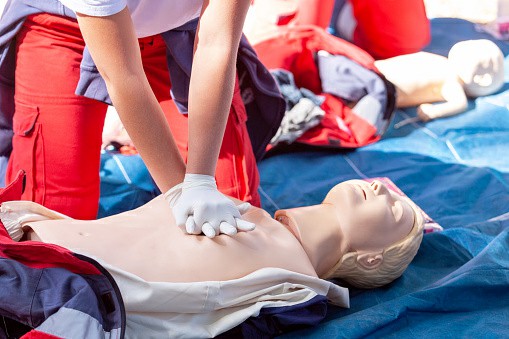Empower Your Workforce: The Essential Role of First Aid & CPR Training in Emergency Preparedness
In today’s fast-paced and unpredictable work environments, the importance of First Aid and CPR training cannot be overstated. Every business owner, HR professional, healthcare provider, and safety officer must recognize the critical role that emergency preparedness plays in safeguarding lives. Completing a comprehensive First Aid Course or achieving First Aid Certification equips individuals and organizations to respond swiftly and effectively during emergencies, ensuring a safer workplace for everyone involved.
Why Prioritize First Aid and CPR Training?
Emergencies can arise without warning, making it imperative for employees to be prepared. Here are some key reasons why investing in Emergency First Aid Training is essential:
- Improved Response Times: Trained individuals can act quickly and correctly, potentially saving lives.
- Enhanced Safety Culture: Fosters an environment where safety is prioritized, promoting better overall employee well-being.
- Compliance with Regulations: Helps businesses meet health and safety laws and standards, avoiding penalties.
- Increased Confidence: Employees feel empowered and prepared to address emergencies, reducing fear and uncertainty.
Critical First Aid Skills Every Workplace Should Implement
A comprehensive First Aid Course covers a range of essential skills that are invaluable in any workplace:
- Basic Emergency Response: Understanding how to assess a situation and prioritize actions effectively is crucial.
- Wound Management: Learning to properly clean and dress wounds can mitigate infection and promote healing.
- Burn Treatment: Knowing how to treat burns reduces damage and potential complications.
- Choking Relief: Techniques for clearing airways can be life-saving during respiratory emergencies.
- Shock Management: Recognizing and addressing shock can stabilize a victim until help arrives.
Understanding CPR: Essential Techniques for Workplace Emergencies
Cardiopulmonary resuscitation (CPR) is a life-saving technique everyone should master. The core objectives of CPR training include:
- Compressions and Breaths: Learning the balance between chest compressions and rescue breaths to maintain blood flow and oxygenation.
- Use of AEDs: Training includes how to correctly operate an Automated External Defibrillator, a critical device in cardiac emergencies.
- Recognizing Cardiac Arrest: Understanding the signs and symptoms that indicate when CPR is needed can save valuable seconds.
How First Aid Certification Ensures Workplace Health & Safety Compliance
Health and safety regulations often mandate that workplaces have adequately trained staff. Achieving First Aid Certification confirms compliance and demonstrates commitment to employee safety:
- Avoiding Penalties: Compliance with workplace first aid requirements helps prevent legal and financial repercussions.
- Insurance Requirements: Many insurers will require businesses to demonstrate adequate training to reduce risk.
- Public Image and Trust: Companies that prioritize safety enhance their reputation and build trust with employees and clients.
Emergency First Aid Procedures: Step-by-Step Guide for Immediate Action
Knowing how to act immediately in an emergency can make all the difference. Here is a simplified step-by-step guide:
- Assess the Situation: Ensure the scene is safe before approaching the victim.
- Call for Help: Alert emergency services immediately and provide clear details of the situation.
- Provide First Aid: Administer appropriate first aid based on the knowledge gained from training.
- Monitor the Victim: Keep an eye on the victim’s condition until professional help arrives.
Choosing the Best First Aid Training Course for Your Employees
When selecting First Aid Training for Employees, consider the following factors:
- Course Reputation: Select training from certified and recognized organizations.
- Course Content: Ensure that the course covers the fundamental skills and techniques relevant to your industry.
- Delivery Method: Consider in-person vs. online courses based on your team's availability and preferences.
- Certification Validity: Ensure the certification meets your local regulatory requirements.
Advantages of Online First Aid and CPR Training for Busy Teams
Online options provide flexible learning that accommodates busy schedules while still delivering essential skills:
- Flexibility: Employees can learn at their own pace, fitting training around their responsibilities.
- Cost-Effective: Reduces travel and accommodation expenses associated with in-person training.
- Access to Resources: Participants can revisit training materials and engage with multimedia resources for better retention.
Conclusion & Call to Action
Organizations that prioritize First Aid Certification and CPR training empower their workforce to respond effectively to emergencies, enhance workplace safety, and comply with regulations. Don’t wait for an emergency to take action. Enroll your team in a comprehensive Emergency First Aid Training Course today and ensure they are prepared to handle any situation that may arise.
For more information or to book a course, please contact us at [email protected] or visit our website.



 349,500 Offered Certificates
349,500 Offered Certificates
 24/7 Online Training
24/7 Online Training
 Money Back Guarantee
Money Back Guarantee
 Fully Accredited Courses
Fully Accredited Courses
